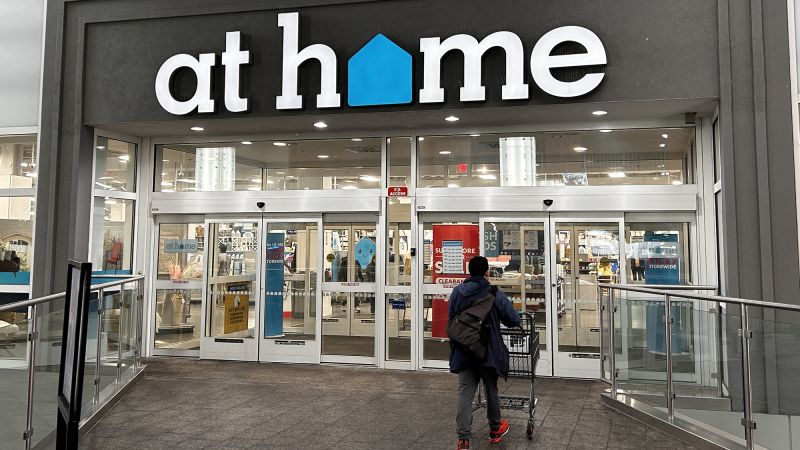At Home, a prominent home goods retailer operating 260 stores across 40 states in the United States, has taken a significant step towards restructuring its financial operations by filing for bankruptcy. The decision to file comes amid a challenging economic backdrop characterized by rising tariffs and a marked slowdown in consumer spending. This move reflects the mounting pressures faced by many retailers grappling with similar economic uncertainties.
The Dallas-based company announced its bankruptcy filing on a recent Monday, outlining a strategic agreement with its lenders designed to alleviate most of its staggering $2 billion debt. As part of this agreement, At Home will gain access to an additional $200 million in fresh funding, allowing the organization to sustain its day-to-day operations while navigating through the complex Chapter 11 bankruptcy process. This financial maneuvering aims to provide At Home with the necessary resources to stabilize its business in the face of market volatility.
Brad Weston, who assumed the role of CEO in the previous year, emphasized the company’s efforts to adapt to an increasingly dynamic trade environment, particularly influenced by tariff implications. Weston noted that these changes would significantly enhance At Home’s competitive position within the marketplace. The company surely anticipates that a successful restructuring will bolster its resilience for the long term, enabling it to operate more effectively amid ongoing instabilities in consumer demand and the broader economy.
The context of this bankruptcy filing lies in a growing climate of uncertainty regarding tariffs, particularly concerning imports from major sourcing locations such as China. Following a period where American tariffs on Chinese goods surged as high as 145%, a recent agreement allowed for a temporary reduction to 30%. This volatility has left many U.S. businesses, including At Home, grappling with unpredictable costs and supply chain challenges.
Additionally, a noticeable decline in discretionary spending among American consumers has taken a severe toll on the home goods sector. At Home is not alone in this predicament; notable retailers like The Container Store, Bed Bath & Beyond, and Big Lots have also succumbed to bankruptcy as they struggled to adapt to shifting consumer habits and preferences.
Despite these external challenges, industry experts indicate that At Home’s most significant obstacle is its considerable debt burden. Neil Saunders, managing director of GlobalData, described the extensive liabilities on At Home’s balance sheet as unsustainable. He noted that the elimination of this debt through the Chapter 11 process would result in a more stable operational foundation for the company going forward.
However, Saunders further critiqued At Home’s market proposition, describing it as weak and not sufficiently distinct to effectively compete with rival retailers such as Ikea and Wayfair. In his assessment, he highlighted the lack of inspiration and excitement within At Home’s stores, asserting that weaker customer engagement and competition might be hindering the company’s performance in highly competitive areas.
Despite the turmoil of the Chapter 11 process, At Home has pledged to maintain normal operations throughout this period. This includes fulfillment of orders, payment to vendors, and continuation of its customer loyalty program. However, acknowledging the potential need for operational streamlining, the company indicated that some store closures might occur, although the majority of its locations will remain open. Reports suggest that around 20 stores could be shuttered in the near future.
Looking ahead, At Home anticipates that upon completing its Chapter 11 restructuring, it will emerge with new ownership and a significantly strengthened balance sheet. This prospect, as outlined by CEO Brad Weston, offers a glimmer of hope for a revitalized future as the company seeks to redefine its presence in the competitive home goods marketplace. Ultimately, At Home’s journey through bankruptcy reflects broader trends affecting many retailers as they strive to adapt to a rapidly evolving economic landscape.



